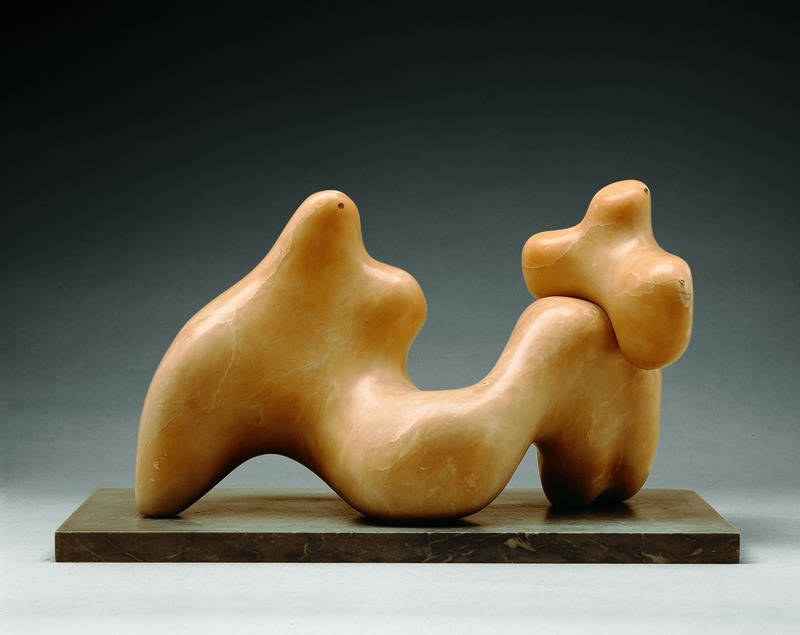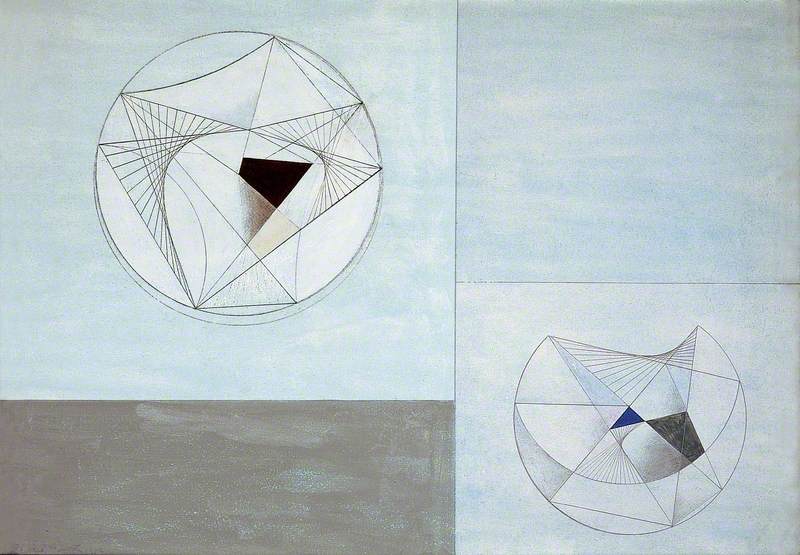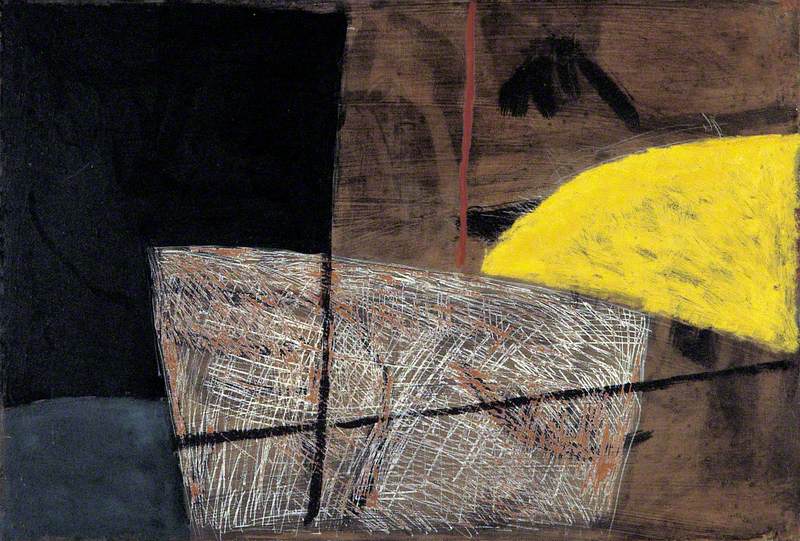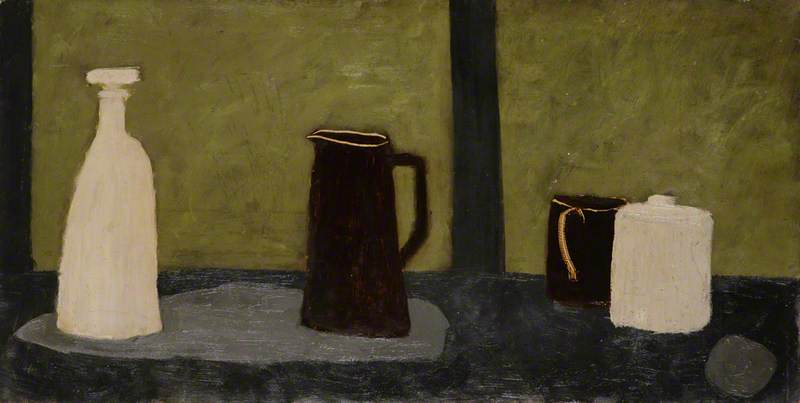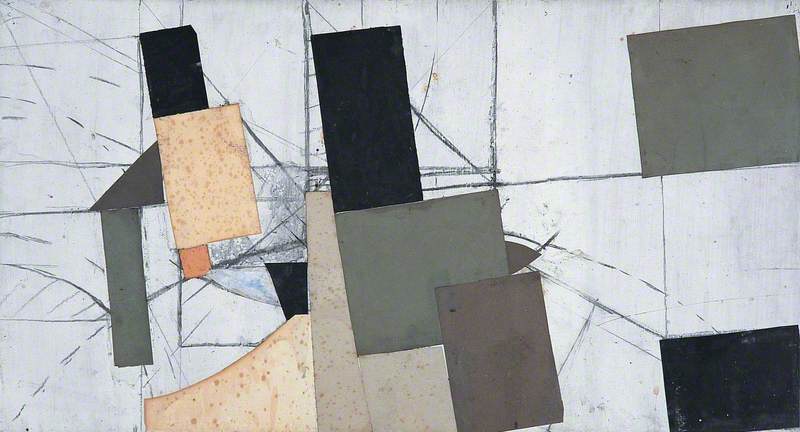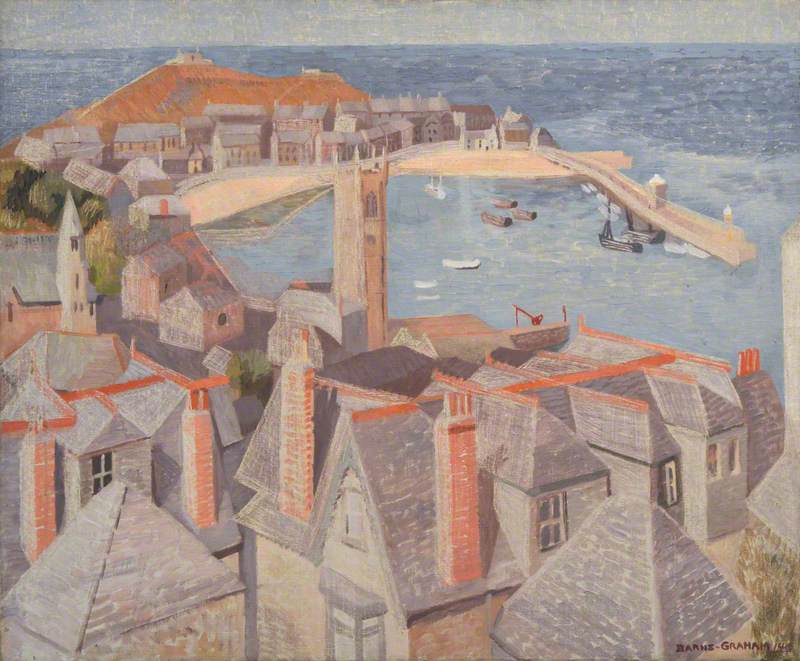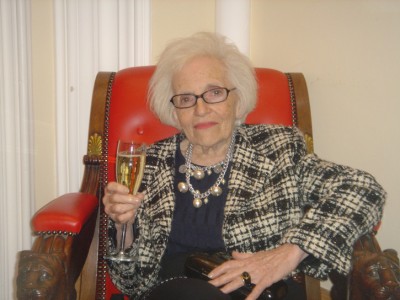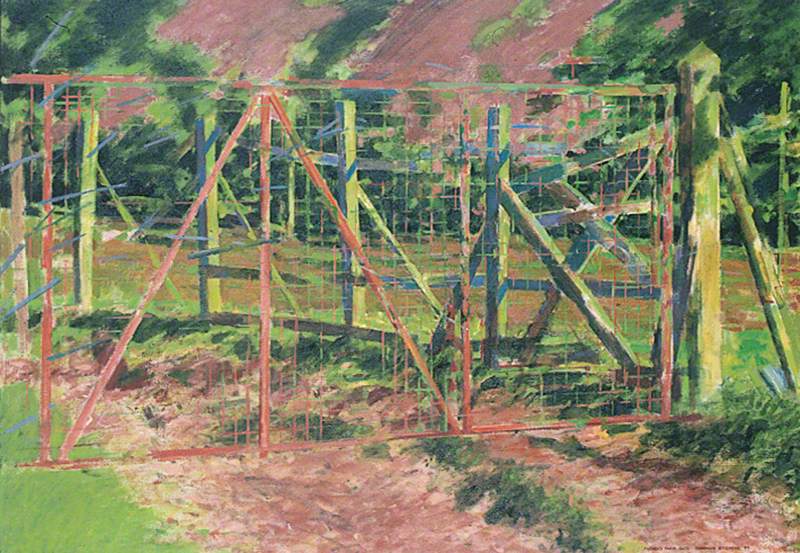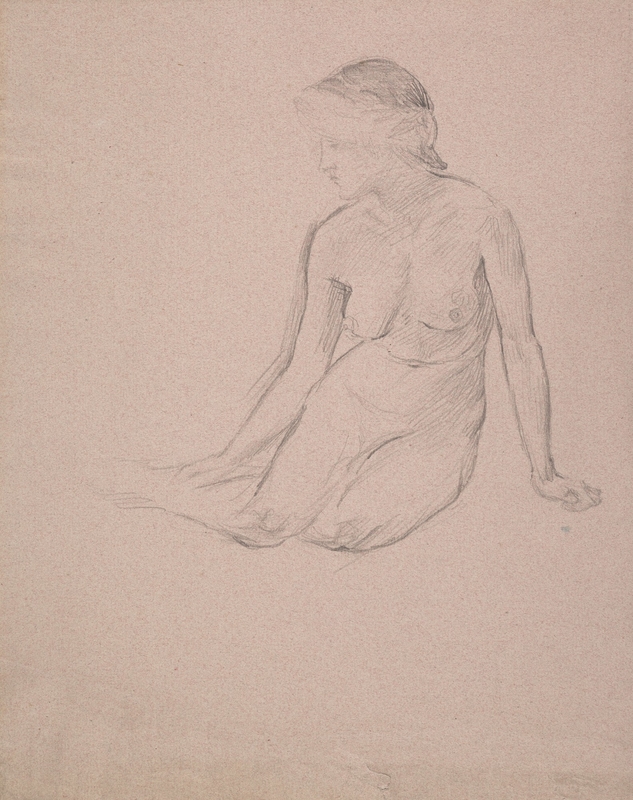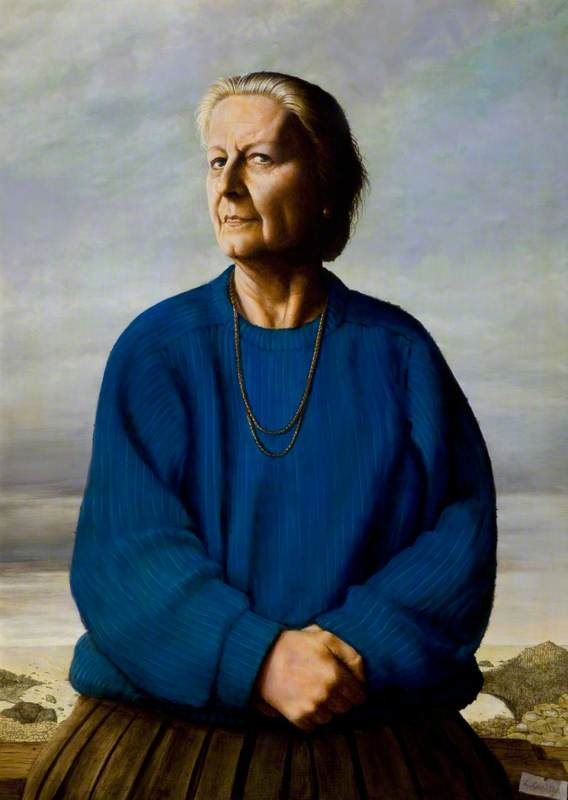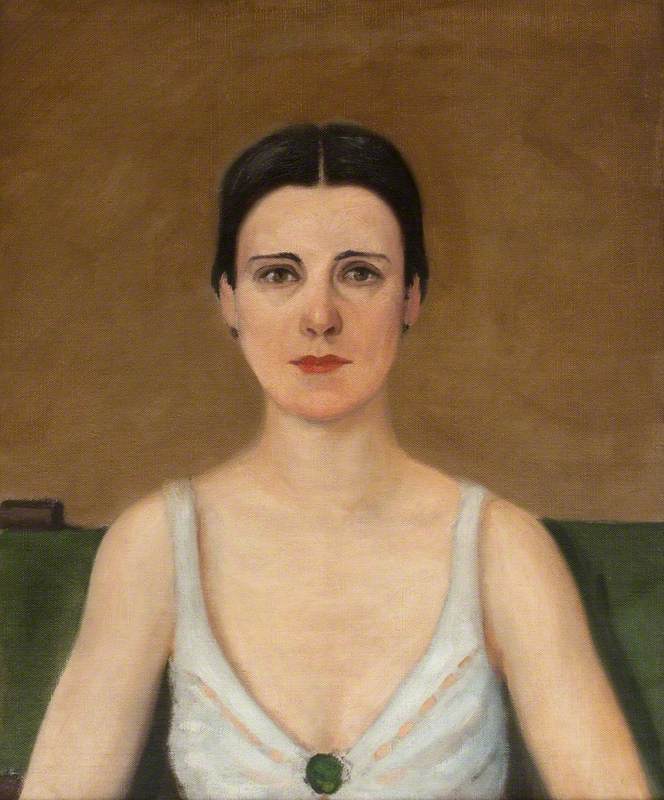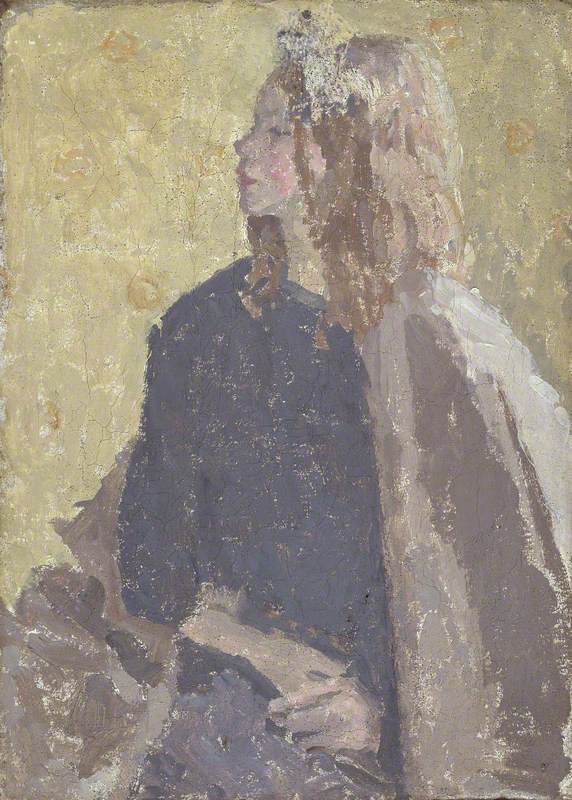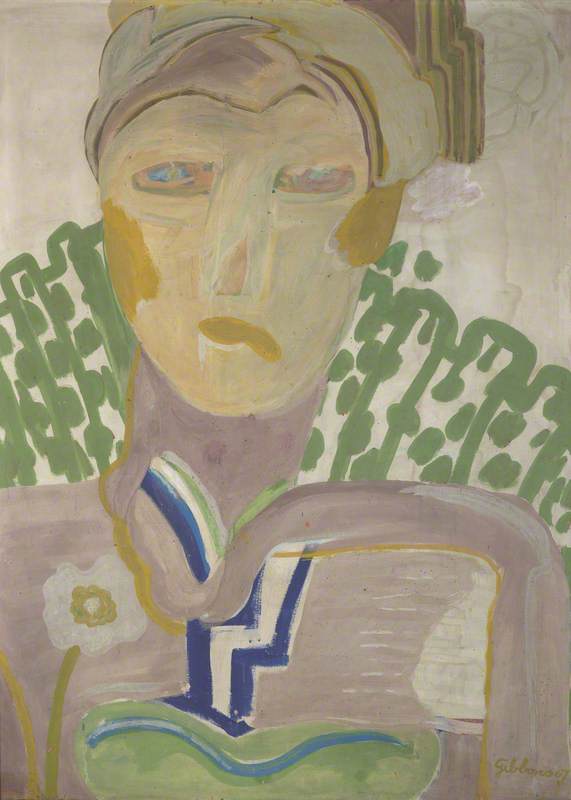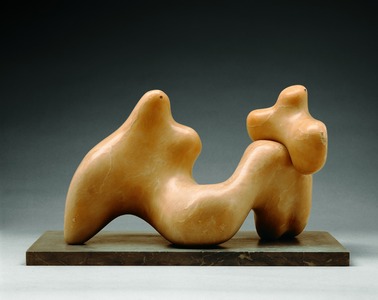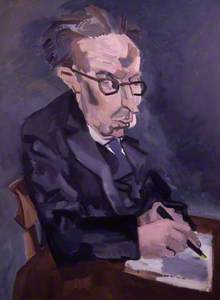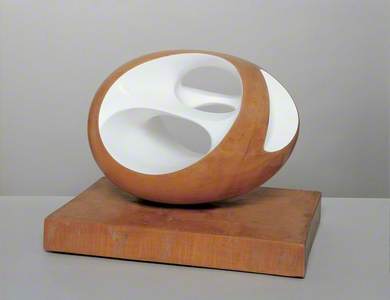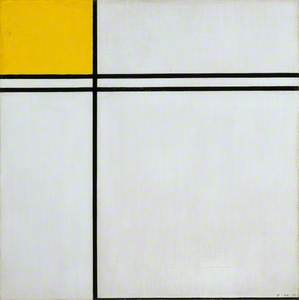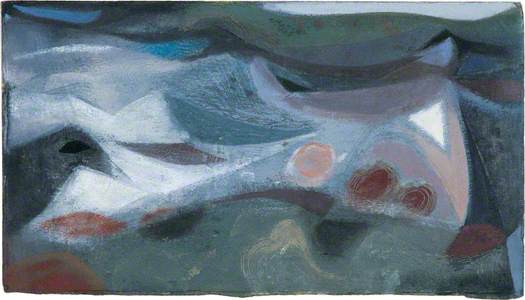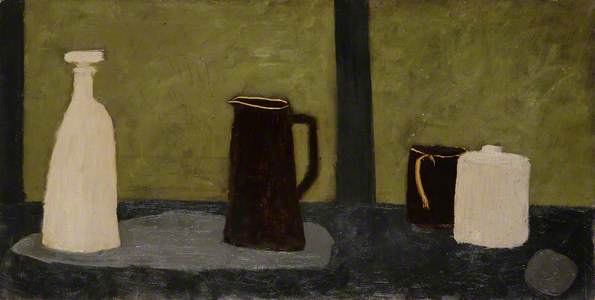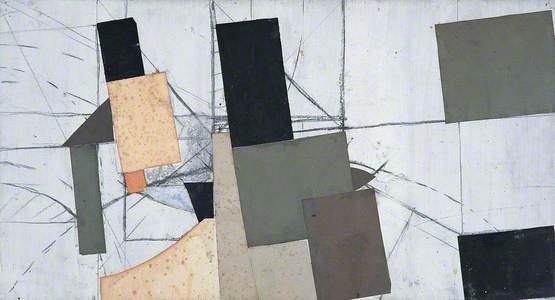She didn't like being referred to as an art collector, but that's how Margaret Gardiner (1904–2005) came to be best known.
Her very personal collection not only charted the development of British Modernism, but also came to form the basis of one of Scotland's significant public art collections – The Pier Arts Centre in Orkney.
Margaret Gardiner at the Pier c.1980 with 'Curved Form (Trevalgan)' by Barbara Hepworth (1903–1975)
As well as a collector, Margaret was also a benefactor, philanthropist and political activist. She also associated with, and became very close to, many leading figures in the worlds of art and literature.
She regularly mixed with the Bloomsbury Set in London, and was friends with a wide circle of artists and art critics. Among them were Barbara Hepworth, Ben Nicholson, Naum Gabo and the critic Herbert Read.
Thanks to the investments her maternal grandfather had made, Margaret had no pressing reasons to work, other than to give her life some purpose. One of the causes she committed to with great energy was establishing the Pier Arts Centre in Stromness, Orkney's second town.
The Pier Arts Centre in Stromness
Born in Berlin to well-off parents, the Egyptologist Sir Alan Gardiner and Lady Hedwig Gardiner, Margaret returned with her family to London at the beginning of the First World War. After a private education, she went on to read Modern Languages at Newnham College, University of Cambridge, before changing course to study Philosophy, and eventually Russian.
Sir Alan Henderson Gardiner (1879–1963), Honorary Fellow (1935)
1938
Lafayette Ltd (active 1880–1952) (after) 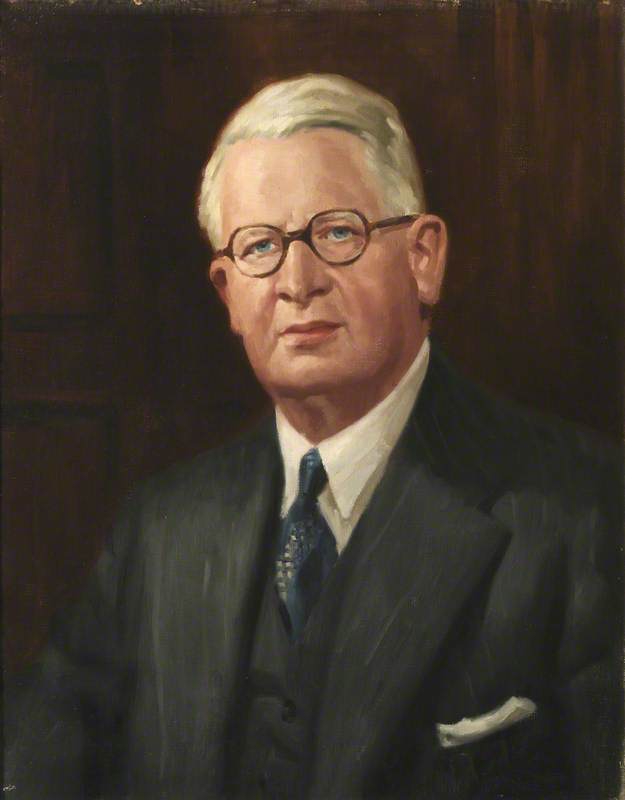
In 1934, Margaret met the scientist and crystallographer John Desmond Bernal. While they never married, they had a son, Martin. Desmond, as he was known, was a lifelong Communist, and Margaret accompanied him to Moscow. They also went on demonstrations against the Vietnam War and, later, Margaret organised a major campaign for the disarmament of nuclear weapons.
Although she undertook a period of training to be a teacher, Margaret quickly abandoned teaching when it became clear that her liberal ideas did not align with those prevalent at schools in her day. Instead, she followed her passion for politics, engaging in various forms of activism, helping friends in financial need and supporting causes that were important to her.
Margaret first visited Orkney with Martin in the 1950s, and she began making regular trips to the islands during the 1970s, after Desmond died. She liked the Orcadian people, and together with Martin eventually purchased a cottage on the island of Rousay, just north of Orkney's Mainland.
The Pier Arts Centre buildings as they were c.1907
During her sojourns back to Mainland, she realised that local artists had nowhere to exhibit their work. In Stromness, she found two adjacent buildings facing into the narrow, cobbled main street, which had their own piers.
The nineteenth-century former warehouse and merchant's home, which had connections to Canada's Hudson Bay Company, seemed to be crying out to be revived, joined and turned into an exhibition space.
For a time, until the Pier Trust acquired the property, the merchant's house was occupied by the artist Sylvia Wishart. She and Margaret became firm friends and, together with Margaret, Wishart was instrumental in hanging the art that launched the Pier Arts Centre.
Margaret's interest in art and those making it began with her friendship with Barbara Hepworth. They met in 1930 and became close friends. Some of the correspondence between them revealing their relationship can be viewed online in Tate's archive.
It was when Hepworth began a relationship with Ben Nicholson, and they had triplets, that Margaret, observing their financial struggle to keep the family afloat, started purchasing some of Hepworth's pieces to help them out. Not an art expert at the time, she simply bought works that she liked and felt comfortable having in her own home.
The Pier Arts Centre, as it came to be named, opened its doors to the public in July 1979. Margaret's founding gift consisted of 67 paintings and sculptures, which are still an important part of the permanent collection today.
The Pier Arts Centre in Stromness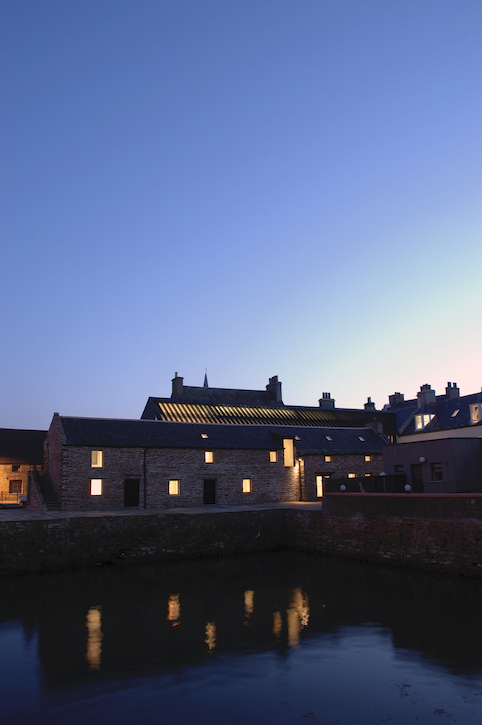
One of the first pieces Margaret donated was Hepworth's Oval Sculpture. It was Margaret who gave Hepworth the piece of guarea wood from which it is made.
How she first came to own Oval Sculpture is a story that worked in its day, but is hard to imagine happening now. Loving the piece when she first saw it in a London gallery in 1946, but unable to afford it, she purchased it jointly with another collector.
The pair agreed that they would each keep the sculpture for half the year. The other owner lived in Yorkshire, and drove down to London every six months for the exchange to take place. You can read more about their arrangement in another Art UK story.
Another work Margaret gifted to the Pier in its first year was Roger Hilton's painting, Brown, Yellow and Black, from around 1958. Like much of his other work, its influences stem from the Dutch artists Constant and Piet Mondrian.
Composition with Double Line and Yellow
1932
Piet Mondrian (1872–1944) 
Margaret's friends had told her that Hilton was a wonderful artist, but it took time for her to be convinced. She admired the man, but not his paintings. Visiting his studio one day and openly confronting him, Hilton told her it was because she didn't understand his art, and offered to lend her a painting to see whether she would come to like it.
Margaret told how she took the work home and set it on a chair facing her bed. After seeing the painting upon waking for several weeks, she came to love it. Telling Hilton she'd been converted and couldn't bear to part with it, Hilton gifted her the piece.
When Barbara Hepworth and Ben Nicholson relocated from London to Cornwall with their children in 1939, the first two assistants they appointed were Terry Frost and John Wells.
It was through them that Margaret came to know many of the members of the St Ives School of Artists, whose work she bought to support their early careers.
These artists included Peter Lanyon, Patrick Heron, Margaret Mellis and Roger Hilton. Many of their works in the Pier's permanent collection were gifted by Margaret.
Although she is not known to have practised as an artist herself, she painted a little, as this untitled work by her now in the Pier's collection shows.
She was also a founder member of the ICA in London, and told how each Christmas a lottery was held there, at which everyone present won a prize. One year she came away with Terry Frost's mixed-media work Collage, which she later gifted to the Pier.
In the first decade of the twenty-first century, the Pier underwent a two-year period of renovation and extension, led by the Edinburgh-based architects Reiach & Hall.
Facing the pier, there is now a huge ceiling-to-floor window, providing a view of Stromness harbour and the sea beyond. An airy, parquet-floored passage joins the two buildings. Wide enough to allow for smaller installations, it's great to wander down and view the paintings displayed on the whitewashed walls.
The interior of the Pier Arts Centre
The centre's permanent collection has grown steadily over the four decades since Margaret first set about establishing a communal place where the art of local creatives could be seen. The Pier also curates a year-round programme of temporary exhibitions and events, including an Annual Open exhibition, which showcases the work of artists across Orkney.
The Pier Arts Centre Annual Open Exhibition 2022
In recent years the gallery has also acquired work by a host of internationally acclaimed contemporary artists, such as Martin Boyce, Katy Dove, Olafur Eliasson, Eva Rothschild and Sean Scully.
In 2022 the Pier Arts Centre launched on the Bloomberg Connects App, a free digital guide where you can explore content from diverse cultural organisations. The guide includes an essay by Margaret Gardiner that first appeared in the Pier's exhibition catalogue The Pier Gallery: The First Ten Years.
The people of Orkney have successfully preserved and enhanced the fabulous legacy Margaret Gardiner gifted to Stromness. It would not be the place it is today without the generosity and compassion extended to it by the philanthropic nature and love of people that made Margaret the person she was.
Carola Huttmann, writer, reviewer and independent scholar
This content was supported by Creative Scotland
Scan the QR code to download the Bloomberg Connects app
